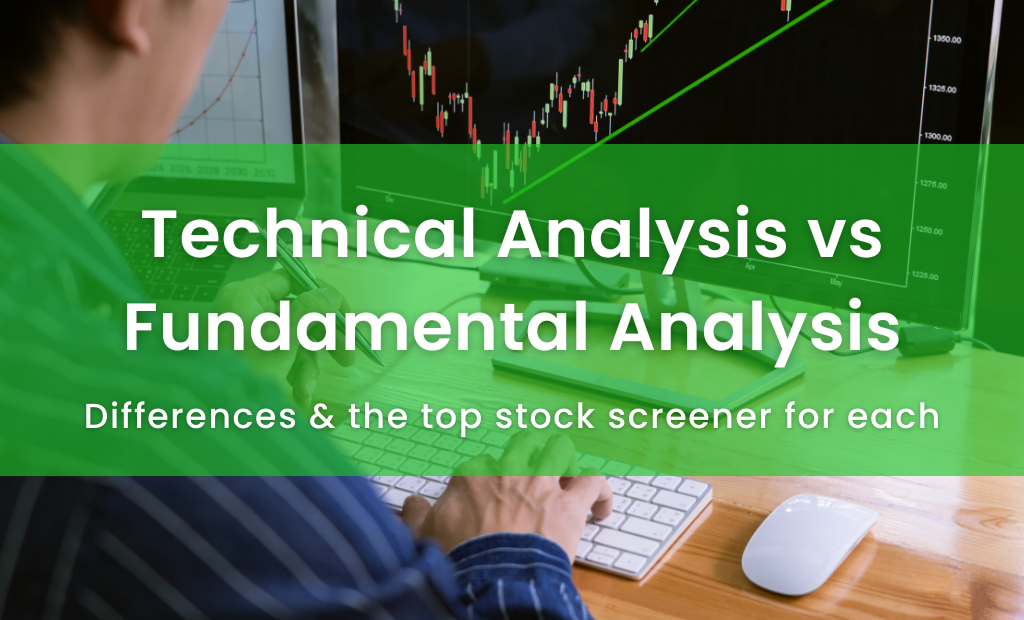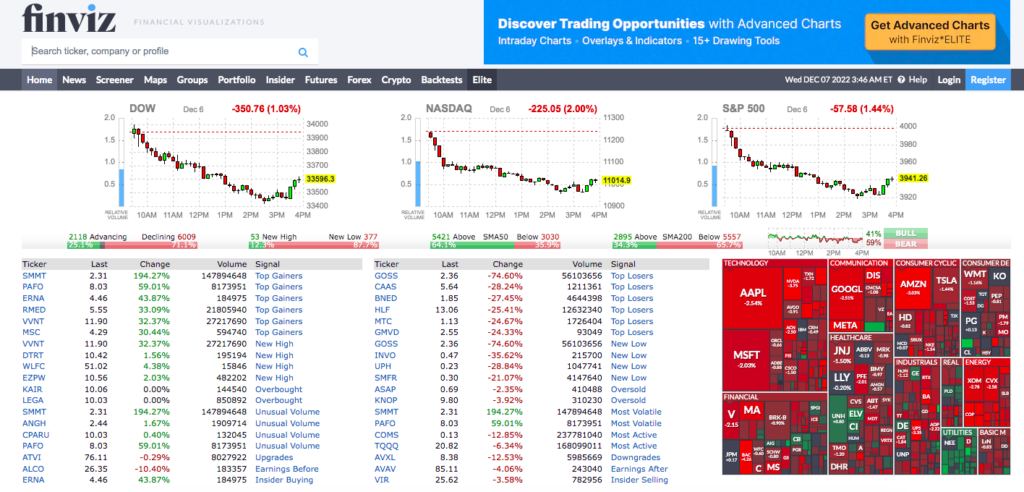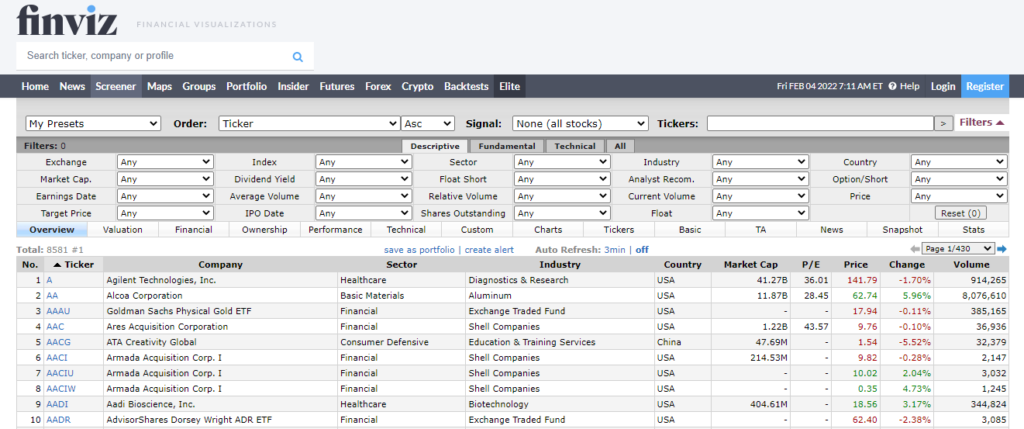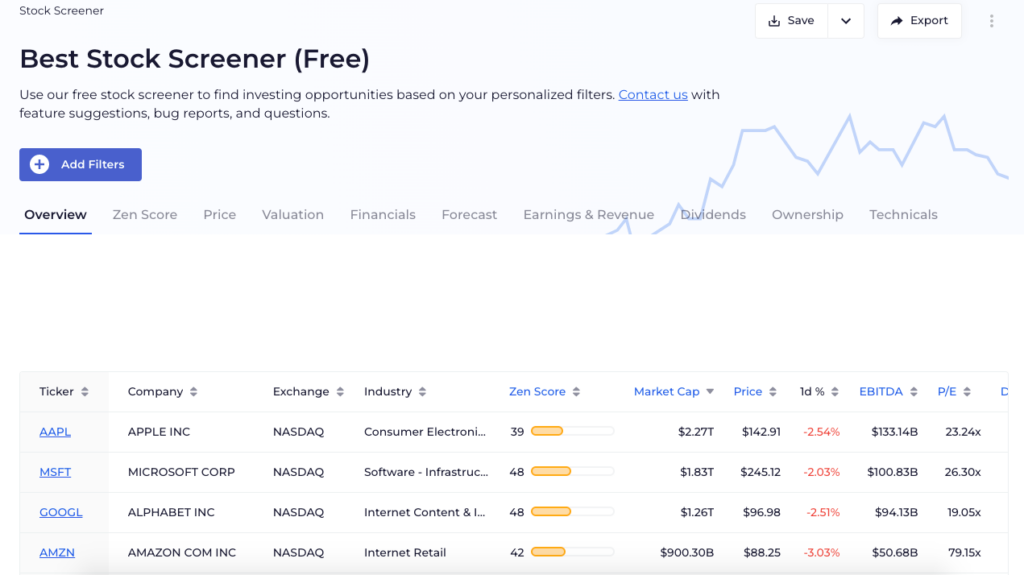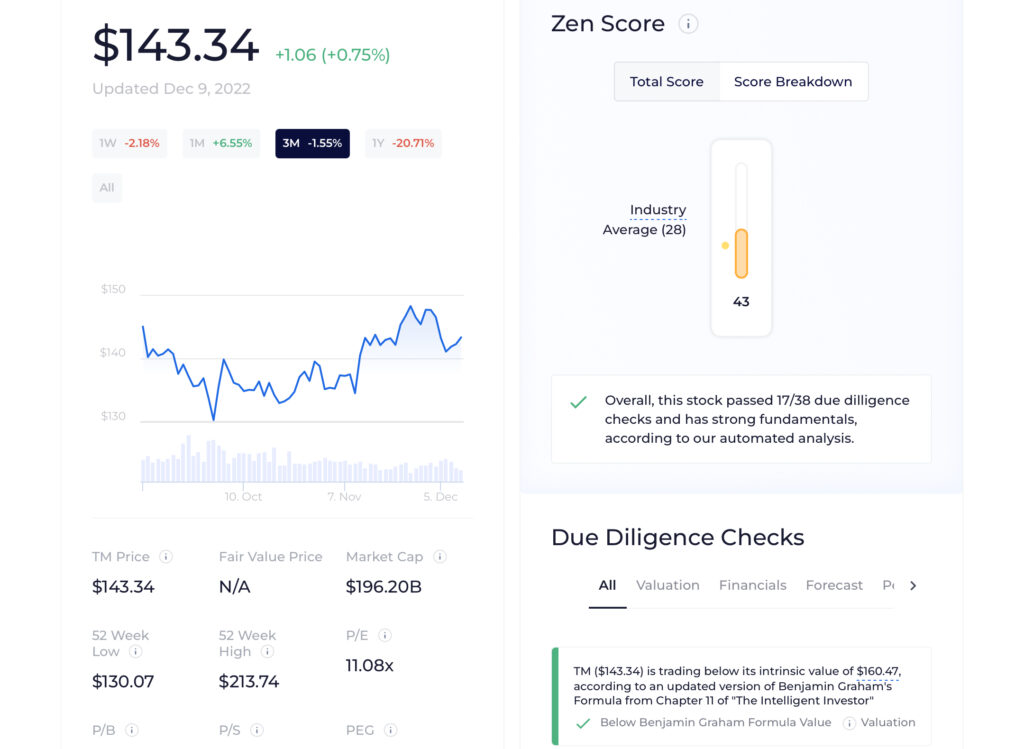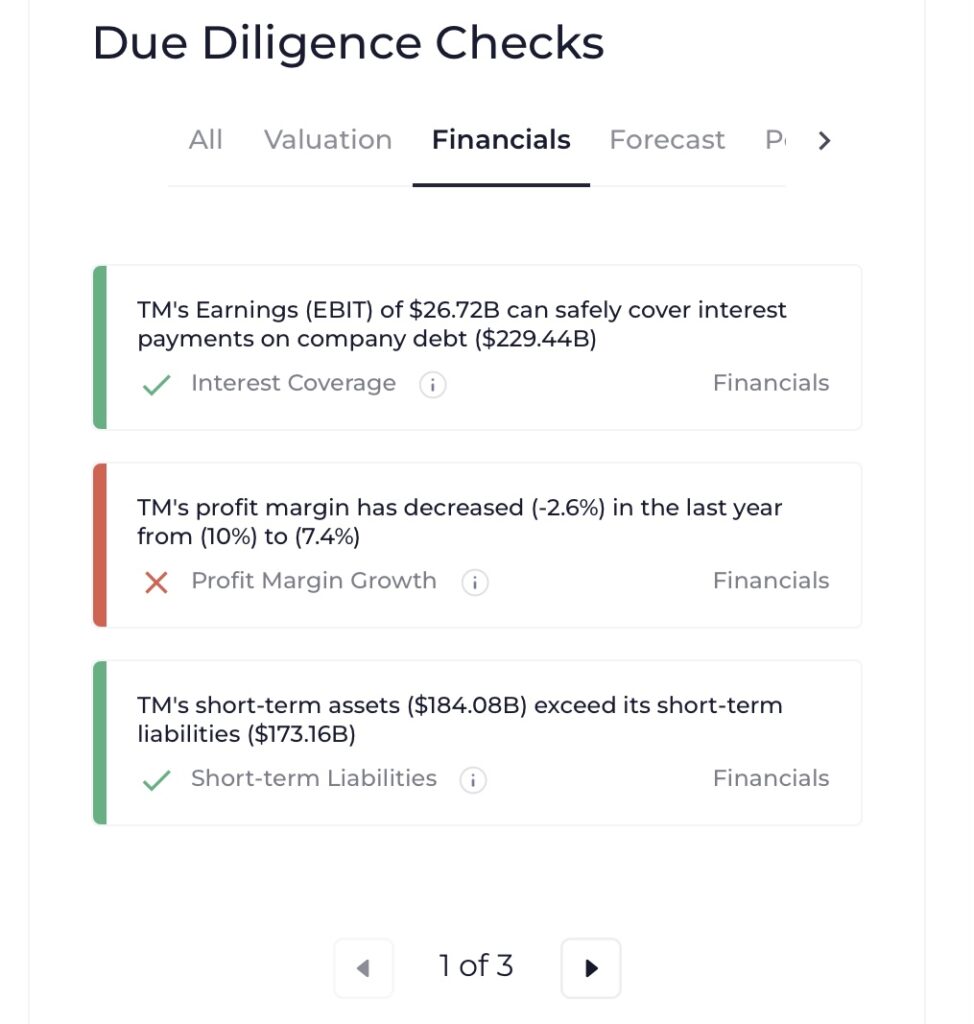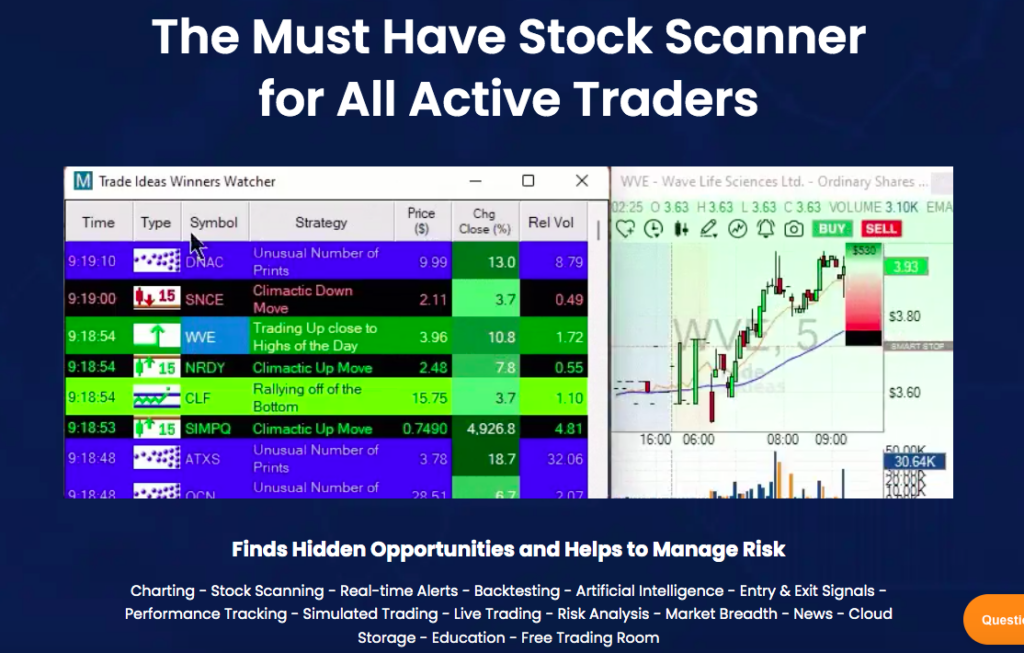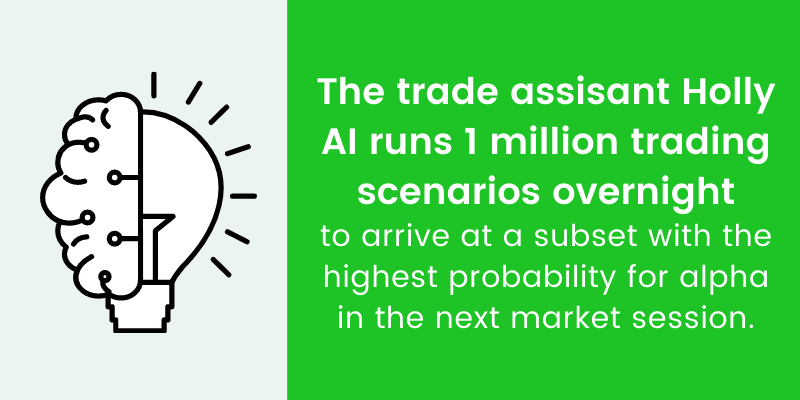We all know that analyzing stocks is key to identifying trading opportunities. Some traders put more emphasis on technical analysis, while others tend to focus more on fundamental analysis. Both of these analysis types have their merits and are worth learning. But before you analyze a stock, you need to find it first. So you want to use a stock screener, specifically one that fits your trading style. So in this post, we’ll take a look at technical analysis vs fundamental analysis, and which stock screener you should use for each.
Table of Contents
- What Is Technical Analysis?
- What Is Fundamental Analysis?
- Technical Analysis vs Fundamental Analysis: What Is the Difference?
- Finviz:Best Stock Screener for Technical Analysis
- WallStreetZen: Best Stock Screener for Fundamental Analysis
- Trade Ideas:Best Stock Scanner for Real-Time Screening
- Technical Analysis vs Fundamental Analysis: In Conclusion
Improve Your Trading Performance with Tradervue
Record your trades, analyze your performance, and share your notes to refine your trading strategies and consistently increase your profits.
Try it free for 7 days
While you’re probably already familiar with these two concepts, this is a good time to have a quick refresher on each of them and how they differ from each other.
What Is Technical Analysis?
Technical analysis means analyzing a security’s price movement and volume to identify trading opportunities. By looking for statistical trends and historical patterns in past market data, traders try to predict the future movement of price. The core assumption here is that past trends tend to repeat themselves, so analyzing historical data indicates of where price is likely to move.
Technical analysts use many indicators to understand market sentiment and forecast price changes. The most common technical indicators include:
- Moving Averages (SMA, MACD, etc.)
- Relative Strength Indicator (RSI)
- Bollinger Bands
- Stochastic Oscillator
- Price action patterns
- Etc.
What Is Fundamental Analysis?
Fundamental analysis is the analysis of a company’s financial and economic performance (also called “fundamentals”) to determine the intrinsic value of its stock. This type of analysis relies on both quantitative and qualitative factors, namely:
- The company’s financial statements: income statement, balance sheet, cash flow statement, etc.
- The overall state of the economy
- Industry trends and news
- The company’s competition
- Press releases by the company
- Brand image
- Management decisions
- Etc.
To find information for fundamental analysis, traders consult financial statements, annual reports, market reports, government agency reports, reliable websites, etc.
By assessing these factors, a trader can determine if a security is overvalued or undervalued in the market. That way, they will invest in undervalued securities with the hope that their price will rise in the future. Likewise, they may choose to sell a security that is overvalued by the market before its price plummets.
On the quantitative side of fundamental analysis, traders and investors typically study several indicators, most notably:
- Earnings Per Share (EPS)
- Price to Earnings Ratio (P/E)
- Return On Equity (ROE)
- Projected Earnings Growth (PEG)
- Free Cash Flow (FCF)
- Debt-to-Equity Ratio (D/E)
- Etc.
Technical Analysis vs Fundamental Analysis: What Is the Difference?
These two schools of thought hold different viewpoints, so let’s take a look at the main differences between technical and fundamental analysis.
On one hand, technical analysis is based on the underlying assumption that a company’s stock value already reflects its real value.
On the other hand, fundamental analysis focuses on the company’s financial and economic performance, rather than the price movement of its stock, to determine its true value.
There is also a major difference regarding the time frame. Traders (especially day traders) use technical analysis to identify short-term opportunities, whereas traders, investors, and institutions who seek long-term opportunities will focus more on fundamental analysis.
Furthermore, technical analysis is purely quantitative, whereas fundamental analysis is both quantitative and qualitative.
Which one is better?
So you might be wondering which type of analysis will guide your trading decisions better. The truth is neither of them is objectively better than the other.
Both disciplines have their share of criticism, but neither of them should be disregarded. You can—and should—use them both to identify trading opportunities. Each analysis type helps you uncover different insights. Just keep in mind that, at the end of the day, no one can be 100% sure of what will happen in the market.
As we just explained, day traders and swing traders will naturally use technical analysis more, while long-term investors will rely more on fundamental analysis. The two are not necessarily mutually exclusive; which one to focus on depends on what type of trader you are. It’s even possible to use a combination of the two to guide your trading and investment decisions.
Improve Your Trading Performance with Tradervue
Record your trades, analyze your performance, and share your notes to refine your trading strategies and consistently increase your profits.
Try it free for 7 days
So now that we have a clear understanding of technical analysis vs fundamental analysis, it’s time to address an important question.
Stock screeners help you find stocks that are worth analyzing. So which stock screener should you use for technical analysis? And which one is a better fit for fundamental analysis? Keep reading, because we have a few recommendations for you.
Finviz: Best Stock Screener for Technical Analysis
Finviz (short for Financial Visualizations) is a very popular stock screener as well as one of the oldest—it was created in 2007. It has nearly 20 million monthly users, many of which are intraday and swing traders. The supported assets include stocks, futures, forex, and crypto.
This stock screener is very simple to use: you choose the filters you want for your research and Finviz instantly generates a list of stocks that match your criteria.
You can filter stocks by exchange, index, sector, industry, country, market cap, P/E, dividend yield, earnings date, price, change, average volume, and a whole lot more. There are also plenty of technical and fundamental filters to refine your search.
Once you get a list of stocks, you can sort them by criteria (gap, ticker, etc.) and signals (top gainers, top losers, most volatile, overbought, etc.).
Furthermore, for each stock that you click on, you get various data points like Earnings Per Share, sales Q/Q, Price-to-Sales, etc. You can also save your screens as hypothetical portfolios.
So what makes Finviz the best screener for technical analysis?
The advantages of using Finviz for technical analysis
Finviz is extremely useful for intraday and swing traders who want to use technical analysis to identify opportunities. Here is what Finviz has to offer:
- Real-time stock prices (exclusive to Finviz*Elite)
- A large number of technical indicators (SMA, EMA, RSI, RMA, etc.)
- Interactive charts
- Intraday charts (Finviz*Elite only)
- Correlations feature: you can track correlated stocks
- Backtesting with historical data
- Alerts and notifications
- Newsfeed
- And more
These features (and more) make Finviz an ideal stock screener for technical analysts. On top of that, you can consult some fundamental indicators like EPS and sales Q/Q to mention a few.
The free version lets you screen for stocks and study charts, but keep in mind that there is a data delay of 15-20 minutes. So to use all features, like real-time prices, intraday charts, and advanced charting tools, you want to subscribe to Finviz*Elite for $299.5 a year (just $24.96/month), which is quite affordable for such a powerful screening tool. Plus, you have a 30-day money-back guarantee, so you can try it out extensively without risking anything.
Overall, Finviz is the best stock screener for intraday and swing traders who want to easily screen for stocks and perform in-depth technical analysis.
Disclaimer: This blog post includes affiliate links. We may receive compensation for clicks that result in a purchase, at no extra cost to you.
WallStreetZen: Best Stock Screener for Fundamental Analysis
If you want to focus more on the fundamental side of stock analysis, then WallStreetZen is a great choice. Here’s why.
WallStreetZen is a stock screener and fundamental analysis tool built for part-time investors. Unlike other screeners, WallStreetZen not only lets you screen for stocks that may be worth investing in but also helps you understand their fundamentals easily and quickly.
The advantages of using WallStreetZen
The screener feature is free to use and quite powerful. You can add a lot of filters, many of which focus on fundamentals:
- Company: ticker, exchange, sector, industry, market cap, price, volume
- Zen Score: an automated score calculated with 38 due diligence checks that cover valuation, financials, forecast, performance, and dividends
- Price
- Valuation
- Forecast
- Financials
- Dividends
- Earnings & revenue
- Ownership
So right away, you can see what’s different about WallStreetZen: it gives you information that is hard to find elsewhere. Instead of digging into multiple reports, websites, and other sources to find fundamental data, you can set filters that focus on the financial and economic performance of companies.
When you click on a stock, you get an in-depth summary of its performance which covers many aspects, from valuation to financial health, forecast, earnings, and more. The sleek and minimalistic UI makes it easy to digest key information.
The Zen Score
But where WallStreetZen shines is the Zen Score. This unique feature automates due diligence checks used in fundamental analysis and gives each stock a score. This alone will save hours and hours of manually analyzing huge spreadsheets. A higher Zen Score indicates a higher probability of a stock performing better in the future (naturally, this remains an assessment, not a guarantee). Plus, you can also compare a company’s Score to the industry’s average Score.
The Zen Score performs 38 due diligence checks across 5 dimensions: valuation, forecast, performance, financials, and dividends. Each dimension gets its own score with one-sentence explanations for that score. In other words, WallStreetZen doesn’t just provide you with data, it also tells you how to interpret that data. This sets it apart from other fundamental analysis tools.
Other features
Another handy feature is Stock Ideas, which suggests stocks based on different criteria, like hot penny stocks, stocks with undervalued growth, extremely volatile stocks, etc.
Additionally, you can still review technical indicators such as the SMA, RSI, Stochastic %K, MACD, and more.
You can use WallStreetZen’s basic stock screener for free and consult any company’s performance overview. But to get the most out of this tool, you should upgrade to WallStreetZen Premium. By doing this, you unlock a lot more features:
- Advanced stock screener with extra functionalities
- View forecasts from top analysts
- See which stocks top analysts recommend
- Why Price Moved: a short explanation of what made a stock trend higher or lower
- Email updates
WallStreetZen Premium is priced at $150 per year and has a 30-day money-back guarantee.
Disclaimer: This blog post includes affiliate links. We may receive compensation for clicks that result in a purchase, at no extra cost to you.
Alright, so now you know which stock screener to use for technical or fundamental analysis. But what if you are an active trader and you want to screen for stocks using real-time data? In that case, you might want to try Trade Ideas.
Trade Ideas: Best Stock Scanner for Real-Time Screening
Trade Ideas is an advanced stock scanning tool that has been around since 2003. It is mainly a desktop application, though a web version is available (note that the former works better than the latter). Experienced traders use its extensive screening capabilities as well as the AI advisor Holly to find real-time trading opportunities.
Unlike most stock screeners, which typically display data with a certain delay, Trade Ideas shows you the fluctuations of stock prices as they are happening, making it a stock scanner rather than just a stock screener.
Trade Ideas offers a vast array of functionalities that help you find stocks that are worth looking deeper into. For starters, you can set many stock filters to refine your stock research: exchange, price, volume, change, gap, volatility, short growth, and more.
You can also choose from 40 pre-configured Scanners, each built around a specific scenario, like high-volume Moving Average breakouts, bullish candlestick patterns, or stocks down 5 days in a row. Furthermore, you can customize each Scanner to your liking.
It’s also possible to display multiple charts on your screen, making it easy to keep track of several stocks at the same time.
But what Trade Ideas is most known for is the AI-powered assistant called Holly (though it is exclusive to the Premium Plan). Holly tests countless trading strategies overnight to come up with the most likely scenarios and then provides detailed recommendations every morning. As an AI advisor, her suggestions are not influenced by emotions. Holly’s trading signals are entry prices, stops, and targets.
The advantages of using Trade Ideas
Trade Ideas is one of the best stock screening tools to get real-time data, making it an excellent choice for active traders. Notable features include:
- Highly customizable
- Has many advanced built-in screeners
- Simultaneous charts
- Backtesting system
- Simulated trading
- Price alerts
- You can chat with traders in a live trading room
- Integrated with brokerages
- Educational resources
Trade Ideas is mostly a technical stock screener, but using it for fundamental analysis works well too. Just keep in mind that it is more complex to use than Finviz. That said, there is a large collection of webinars, videos, eBooks, and other resources to teach you how to use Trade Ideas.
Unlike Finviz and WallStreetZen, Trade Ideas does not have a free version nor does it offer free trials. To use it, you can subscribe to either the Standard or Premium Plans, which cost $84/month and $167/month respectively if you go with annual billing.
Technical Analysis vs Fundamental Analysis: In Conclusion
Traders often bring up in discussions the debate of technical analysis vs fundamental analysis. Both schools of thought have proven merits and are very much worth learning. Technical analysis focuses on price movement and volume, whereas fundamental analysis focuses more on financial and economic performance.
Which type of analysis you should focus on depends on your trading style. Intraday and swing traders tend to rely more on technical analysis, while long-term investors naturally use fundamental analysis more.
Whichever type you decide to use, stock screeners are an essential tool in your arsenal. You want to use the screener that best fits your trading style. We recommend you pick Finviz for technical analysis and WallStreetZen for fundamental analysis. Trade Ideas is a great choice for both types but works best for day traders who want real-time stock screening.
After you find stocks worth investing in and start trading, it’s vital to keep a journal of your trades so you can review them and understand what works for you and what doesn’t. Try Tradervue for free today and take your journaling to the next level.
Improve Your Trading Performance with Tradervue
Record your trades, analyze your performance, and share your notes to refine your trading strategies and consistently increase your profits.
Try it free for 7 days
